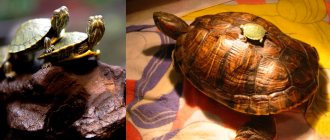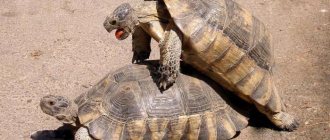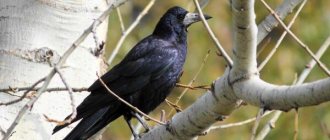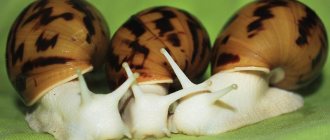Description and natural habitat
The family of land turtles (Testudinidae) includes 16 genera and 57 species. Their sizes lie in a wide range - from small ones 10 cm long to giant ones, reaching more than a meter.
The Latin name translates as brick or tile.
Under natural conditions, the land turtle lives in Africa, Southern Europe, Central, South and North America, throughout Central Asia, preferring the steppe areas of China, Uzbekistan, and Kazakhstan. They can be inhabitants of steppes, savannas, deserts, and some species also inhabit tropical rainforests.
The soils on which these reptiles live can be sandy or loamy. Rocks and small hills are their favorite habitats, but the presence of grass and proximity to water are an indispensable condition.
As housing, turtles often choose ready-made burrows dug by other animals, but they can equip them themselves.
Despite the fact that the reptile is an inhabitant of arid zones, the soil must contain moisture. She won't be able to dig through anything too hard with her paws.
The features of these reptiles are as follows:
- Tall or flattened carapace. It is strong and durable and reliably covers the back (carapace) and belly (plastron) of the animal.
- The shell is capable of withstanding a very heavy load, more than 200 times the mass of the individual itself.
- The turtle's legs are elephant-like, short, powerful and massive, ending in fused toes and free claws.
- The tail is short, often triangular in shape with a sharp spike at the tip.
- Most species have inconspicuous colors - olive-gray or yellowish, brown both on the skin and on the shell.
- The legs, head and tail are covered with leathery scales and scutes.
- Some species, when in danger, emit sharp hissing sounds similar to those of a snake.
- This is a slow and leisurely animal. When in danger, it does not run away, but completely pulls its limbs and head into its shell.
- Another way to protect a land turtle is to suddenly empty its large bladder.
- Males are always smaller than females.
- They have a high life expectancy. For some types it is 50 years, for others 100 and even 150.
Crumbs in the shell: the life period of little turtles
Not everyone is ready to have a large reptile at home. Much more often, babies up to 13 cm in size act as original pets. Despite their miniature size, such “cuties” live quite a long time.
Lifespan of a tiny turtle:
- three-keel - from 20 to 25 years;
- musky - 23;
- spotted - from 30 to 40;
- silt - from 50 to 60;
- Reeves (pond) - 58.
Characteristics and varieties
There are many different types of land turtles in the world, and not all of them are suitable for home keeping. But they are all born very small, up to 3 cm in length. And such a baby can grow into a giant weighing 900 kg.
Species that reach no more than 25-30 cm in adulthood are used as pets.
The most famous and widespread species of land turtles in the world are as follows.
Steppe Central Asian
A small reptile that has lived at home for more than 50 years. They reach sexual maturity by the age of 10, and grow up to 30. The average size is about 20 cm. Distributed in Central Asia, Iran, Afghanistan, and Kazakhstan. The carapace is of small height and has a yellowish or brown tint. It consists of 13 links in the upper part, 25 in the side, the plastron includes 16 shields.
Mediterranean
This turtle is also called Greek or Caucasian. The color of the carapace may include olive, yellowish, and brown tones. The maximum size is up to 35 cm. There may be black spots on the scutes. The elephant-like legs end in 4 or 5 claws.
In nature, they are distributed in North Africa, Southern Europe, South-West Asia, the Caucasus, and Greece, Georgia, Dagestan, Azerbaijan, and Armenia.
Well suited for home keeping.
Leopard (panther)
A very large and beautiful turtle. Up to 70 cm long, weight up to 50 kg. In young turtles, the carapace shell is light beige with a dark pattern on each scute. With age, the color becomes dominated by black and yellow spots, reminiscent in their arrangement of the colors of a leopard.
Natural habitat is Africa, from Sudan to Ethiopia.
A very beautiful inhabitant of the terrarium. There is a known case of a long-lived panther being kept in captivity for up to 75 years.
European land turtles
These species live in Southern Europe, North Africa and Western Asia.
These are the following varieties:
- Toothed turtle;
- Greek;
- Balkan;
- Egyptian.
All these reptiles are small, bright and suitable for home keeping.
American land turtles
These are four species living in South America and the Galapagos:
- Coal or redleg;
- Argentine or Chilean;
- Jagged (forest shabuti);
- Galapagos or elephant.
Their sizes range from 25 to 150 cm. Three species are listed in the International Red Book.
Coal turtles have a tall black carapace with yellow spots. Their sizes reach 35-34 cm. They are kept at home in a special terrarium.
The Chilean tortoise is small, up to 25 cm, common in Argentina, Chile, Bolivia, and Paraguay. Almost exterminated by man.
Shabuti is a very beautiful large (up to 60 cm) turtle. It has a bright brown shell with a yellow spot on each scute. The number of this species is rapidly declining.
Brown
It lives in Southeast Asia, Sumatra, India - in monsoon evergreen forests. This is a fairly large species - the size of individuals reaches 50 cm and a weight of 30 kg.
The only land turtle that builds a special nest for its offspring and protects the clutch.
The meat of the brown turtle is highly valued by the local population; medicines are prepared from the shell. Uncontrolled destruction has led to a significant decline in the species.
Depressed
A very bright and beautiful turtle with a body length of up to 30 cm. It lives in Vietnam, Laos, Thailand, Malaysia, and Burma.
Not suitable for home keeping; it dies quickly in captivity.
Star-shaped
Natural habitats: India, Pakistan, Sri Lanka. Maximum dimensions: 15 cm for a male, 25 cm for a female.
The carapace shell is beautiful and bright. Each grey-green scute has a yellow, raised star pattern.
It is highly valued by professionals and is a decoration for any terrarium. In captivity, it lives up to 80 years.
Madagascar beak-breasted (Angonoka)
Large turtle, up to 50 cm body length. The endemic island of Madagascar is very beautiful. It has raised patterns on the olive-gray carapace.
Now the number of this unusual species in nature is still small, it is maintained in the zoos of New York, San Marino and Honolulu.
Burmese
A very bright small turtle (up to 25 cm) is endemic to Burma. The black or dark brown carapace on each scute has a bright yellow pattern of rays diverging in different directions.
Almost exterminated by the inhabitants of the island. Since ancient times, people have eaten meat, and shells have been used as kitchen utensils.
Indian
The small (up to 28 cm) turtle is endemic to India. The carapace is bright - from light to dark brown. It gets along well with humans, but the number of the species has greatly decreased due to the widespread consumption of animal meat by the indigenous population.
desert gopher
Inhabitant of the deserts of North America and Mexico. Body dimensions are from 22 to 27 cm, the shell is gray-green.
Due to population decline, it is under human protection. Breeds extensively in zoos in Arizona and San Diego.
Well suited for terrarium keeping.
Mexican gopher
This turtle is endemic to Mexico. It has a dome-shaped carapace of a gray-green or brown hue, dimensions up to 40 cm. Due to the high decline in numbers, the species is under the protection of Mexico and the United States, and is propagated in zoos.
Texas gopher
A small and bright turtle, usually 15-20 cm. The carapace scutes are dark brown or almost black with a yellow spot in the middle. It lives in the USA and Mexico; sale and collection of individuals is prohibited.
Gopher polyphemus
The tall and dome-shaped carapace is brown, with a light border along the edge of each scute. The size of an adult is up to 37 cm. It lives in the USA (South Carolina, Georgia, Alabama, Mississippi, Louisiana). This species digs very long burrows for itself - up to 15 m.
Due to declining numbers, it is protected by law and breeds in zoos.
Giant species include the elephant or Galapagos tortoise, the Seychelles giant tortoise and some others.
Photo gallery of land turtles:
How long do turtles live in the wild?
It is generally accepted that turtles are the most long-lived animals.
In fact, this opinion arose on the basis of isolated cases, most often in large species. According to statistics, the survival of young animals in natural conditions is low. A large number of eggs laid can increase the population, but only a maximum of 60% of this amount can be born, while the rest become food for predators. However, the babies are also a delicacy for them; half of the hatched ones are also eaten. Only a few of the population survive to the age of 30. The average lifespan of a turtle is about 20 years. How long they live in nature depends on many factors and the type of individual. The larger the individual, the longer its life. The lifespan of small sizes does not exceed 50 years, and of medium sizes - 85. Large ones, for example Seychelles, can live up to 200.
Care and maintenance of land turtles at home
Keeping a land turtle at home is not difficult, but it does require the arrangement of a special terrarium. If you do not provide for it, but let the reptile crawl on the floor, then the pet can easily catch a cold, get injured, or catch an inspection.
For the first time, you can set up a newly acquired turtle in a spacious cardboard box and start making a comfortable terrarium.
Its dimensions must be quite large, since an adult can grow up to 20 cm, and some species up to 30-35 cm.
The minimum dimensions of a terrarium for one pet are 110x50x40 cm. You should not arrange a pile of sticks and branches in it, the animal needs enough space to move, it is not such a slow creature as is commonly believed.
You can add clay or sand to the bottom of the terrarium, but the soil must first be disinfected. It is better to cover the bottom with sawdust, purchasing them at a pet store. They are easy to change (1-2 times a month) when they get dirty.
A small house, a kind of shelter, should be provided in the room. It can be made from a small cardboard box, plywood, wood or durable plastic.
To maintain optimal temperature conditions, an incandescent lamp with a power of at least 75 W is installed in the upper part of the terrarium.
In the shady part the temperature should be about +30 °C, in the rest - +37...+40 °C.
About once a week the turtle needs water treatments. To do this, water with a temperature of about +25 °C is poured into a small flat basin. There should be enough liquid to cover the animal's body to the middle of the neck.
How to find out the age of turtles?
Radiocarbon dating of the shell makes it possible to most accurately determine the number of years. It was this method that made it possible to confirm the age of the oldest turtles in the world. Of course, such research cannot be carried out during life, but there is a more humane method.
Methods for determining age:
- Along the length of the shell. It tends to change evenly. Every year he gains 2 centimeters. It is not so difficult to take measurements and calculate if you know the initial length. The size of newborns is only 3 cm. Calculating the age is not difficult. For example, the length of the shell is 30 cm. If you subtract the initial size from the final size, 30 - 3 = 27, you get the number by which the turtle has grown in its entire life. Dividing it by 2 (the number of centimeters per year), the age is 13.5 years.
- Counting rings. This method is less accurate because it requires careful observations. The method should not be confused with determining the age of a tree; there is no need to cut anyone. You need to count the rings by the scales on the shell. More accurate results can be obtained on young animals. This is because in older individuals they are smoothed out. The turtle is 1 - 2 years old, if there are less than 6 scales. In one year, 2-3 rings are added.
Whatever method is chosen, none gives 100% accuracy of calculations. This is due to the fact that the growth and formation of the shell depends on the health of the animal, its diet and living conditions.
Feeding
In the wild, this reptile feeds mostly on plant foods and consumes small amounts of protein in the form of worms and snails.
The same diet must be provided to the pet at home. It should contain vegetables, fruits, as well as small insects and pieces of meat.
Feed the turtle once a day. The pet does not need water; the reptile’s body extracts liquid from juicy food.
Also read the article about what to feed land turtles.
Price
You can find out how much a land turtle costs by deciding on the species. The cheapest thing to buy is a Central Asian reptile. Exotic species of turtles will cost more. The price of such a pet ranges from 500 to 2000 rubles. Sales are offered by both specialized stores and private individuals who are engaged in breeding.
| Shop | Price in Moscow (rubles) |
| Avito | 1000-1500 |
| Planet Exotic | 1500 |
| Velesans | 2000 |
| Zoo-Oasis | 700-2500 |
| Bird Market | 1200 |
Diseases and prevention
The land turtle rarely gets sick. Improper living conditions and poor diet can lead to the appearance of some pathologies.
The most common diseases found in these pets are:
Rickets
This disease develops due to a lack of vitamin D and ultraviolet rays. It manifests itself in softening and deformation of the carapace and plastron.
In the early stages, pathology can be dealt with by revising the diet and installing an ultraviolet lamp in the terrarium.
If the disease has progressed far, then it is necessary to contact a veterinary clinic and undergo a course of injections of fortified calcium. But the curvature of the shell will most likely remain with the pet forever.
It is much easier to prevent the disease. To do this, you need to take your pet for a walk under the warm rays of the sun. And adjust your diet so that it contains enough calcium and vitamins.
Eye diseases
If your tortoise's eyes begin to water and swell, and the eyelids stick together and are difficult to open, then most likely there is a lack of vitamin A in the diet.
It is necessary to prepare a warm solution of chamomile and wash your pet’s eyes several times a day using a sterile cotton swab. Albucid and Sofradex eye drops are also used. Your veterinarian will likely prescribe multivitamin injections.
Nutrition needs to be reviewed and the diet adjusted.
Helminthiasis
If your pet begins to suffer from diarrhea or constipation, and whitish moving dots are visible in the excrement, then an infection with internal parasites has occurred.
They could enter the turtle’s body along with low-quality live or raw food, or dirty terrarium filler.
In this case, you should contact a veterinary clinic to prescribe treatment. And as a preventative measure, it is advisable to deworm your pet once every three months.
For turtles, the anthelmintic Wolbazen (Albendazole) is most often used.
acute respiratory infections, pneumonia
The first signs of colds in turtles are pale mucous membranes. Then difficulty breathing, runny nose, drool with white foam, and wheezing appear.
Pneumonia rarely develops in land species; aquatic turtles are more prone to it.
At the slightest sign of a cold, you should contact your veterinarian and begin antibacterial therapy. Antibiotic injections are usually prescribed.
Intestinal obstruction
This problem can arise if the pet has eaten some inedible objects, pieces of rubber, or polyethylene.
A symptom of pathology is stool irregularity. You should try sun and warm water baths; in extreme cases, an enema with chamomile decoction will help.
Infection with external parasites
If small moving dots are found on the turtle's body, then the pet has lice or fleas.
For treatment, a 5% solution of Karbofos is applied to the skin of the reptile and after a while it is washed off with a 0.2% solution of Neguvon.
Adviсe
- Do not keep reptiles of different species in the same terrarium.
- If the reptile escaped from the aquarium and cannot be found, place a bowl of water and your pet's favorite food indoors. Turtles have good eyesight and will respond quickly to treats and water.
- Remember that the depth of the reservoir should allow the animal to easily stick its head out and keep it on the surface.
- Install two thermometers in the aquarium: one for water, the other for air.
- When taking baths, clean the shell with a soft sponge. Brushes injure the animal.
The longest-living turtles are the elephant turtle named Harietta, who lived 175 years, and the Madagascan radiant turtle, Tui Malila, who lived 192 years. Domestic species do not live that long, but they delight their owners for a long time.
Reproduction
It is almost impossible to determine the sex of a land turtle under 2 years of age. Signs that can be used to identify an older animal are as follows:
- Dimensions. Females are slightly larger than males. Using this feature, it is possible to identify a male only if there are several individuals in the terrarium.
- Carapace and plastron. In the lower part, the bone plates of males are concave, since during mating they climb onto females. In females, the carapace is more rounded, in male specimens it is elongated.
- The claws of males are sharper and stronger than those of females. With their help, males hold females during mating.
- The tail of males is wider, more powerful and longer, since it contains the genital organ.
- Eye color will also help determine the sex of the turtle. In the female they are usually yellow, and in the male they are brown.
In nature, mating of individuals occurs in the spring after the end of the winter period, during which some species hibernate.
Breeding at home is a rather difficult process. Mature animals are kept together, usually one male and a pair of females. To do this, you need to build a large terrarium or a warm outdoor enclosure. Pet turtles can mate year-round; all that is needed is adequate temperature and humidity, as well as increased nutrition.
In the banded turtle species, it is necessary to have one male per female, and in caiman turtles this ratio is 2:1.
To stimulate mating, turtles are hibernated during the winter and males and females are separated for a couple of months. Then the temperature in the enclosure or terrarium is gradually increased, simulating spring.
Sometimes they do without forced wintering, but simply shade the terrarium for three months, reducing the air temperature to the lower permissible limit, then also gradually increase the degree of room heating and illumination.
Daylight hours are increased to 14-15 hours, and turtles are sprayed with water from a spray bottle every day for the last two weeks, simulating rain. Then the male is placed with the females, in their room. In this case, the male will behave less aggressively.
If there are two males in the terrarium, then joints are possible between them and there is no need to prevent them to a reasonable extent.
Reproduction is easiest in Central Asian species; they usually do not need stimulation.
After mating has occurred, you need to monitor the female, and as soon as she lays a clutch, immediately move the eggs to the incubator. They mature in 2 to 6 months.
A large glass, clay or porcelain container or an aquarium can be used as an incubator. Peat mixed with river sand in a ratio of 3:2 is poured onto the bottom. It is advisable to pre-calcinate the soil. You can take moistened vermiculite - a special crystalline substrate used in plant growing.
The soil in the incubator must be moist, and the eggs must be placed in special nests - small holes, recessed to a third of the height. During the entire period of egg ripening, sand is lightly sprinkled with water along the edges of the vessel, while avoiding excessive moisture.
You can also place a small jar of water in the vessel; it will evaporate and maintain air humidity at the required level.
The incubator is covered from above, preferably with glass, which is removed a couple of times a week for ventilation.
The soil from below is heated with an electric lamp or a vessel is placed near the heating device. The main thing is to maintain a constant level of temperature and humidity. Therefore, it is better to equip the incubator with a hygrometer and thermometer.
Too high a temperature can destroy the clutch, so it wouldn’t hurt to install a special thermostat in the container with the baby turtles’ eggs.
After the turtles have hatched, there is no need to rush to remove them from the eggs. They feed on their plant solution for up to three days. Even when the baby is completely freed from the shell, the remains of the yolk sac remain on the plastron below.
Turtles can grow up to three months old, feeding only on this yolk. Sometimes they hibernate and spend up to six months in it, gradually growing up.
From the first days, young turtles are able to take care of themselves. They just need to be moistened from time to time to prevent dehydration.
When kept in a terrarium, babies begin to be fed plant foods from the second month of life, but they are given baths every week.
Record holders for longevity
In nature, this type of reptile really leads among living creatures in terms of life expectancy. At the same time, they are not affected by living conditions at all. When studying their physiological characteristics, scientists discovered an amazing fact. It turns out that these reptiles practically do not age. The body of an individual that has just hatched from an egg and one that is already 200 years old functions in the same way. And what a deceptive appearance - wrinkled skin, inhibited movements and delayed perception.
The large turtle, which lives in the oceans and occasionally comes onto land to breed, lives indefinitely. Scientists have not yet figured out how many years of life nature measured out for them. All of them died only from complex viral diseases; not a single individual who died a natural death has yet been found. These animals can stop the heart and fall into a state of suspended animation, and then easily come out of it again. Currently, geneticists are studying the genome of these reptiles in order to discover which gene triggers the longevity program.
It is also true that many pet turtles live for hundreds of years and can be inherited by their descendants. However, they die early due to human fault under the wheels of a car, in the teeth of a predator, due to improper care or as a result of disease.
Pros and cons of home keeping
In order to understand whether a land turtle is suitable for keeping in the house, it is necessary to consider their advantages and disadvantages.
The advantages of these pets are:
- Unpretentiousness and ease of care and maintenance. It is enough to equip the simplest enclosure or terrarium and feed it once a day.
- No allergies. These pets have never caused irritation to the skin or respiratory tract of anyone.
- Minimum costs. They are inexpensive to purchase and their maintenance requires minimal investment, since turtles eat little and mostly greens, which in the summer, for example, can be collected at the dacha or in the park.
- Long lifespan. Land pets live at least 30 years.
- Safety for household members. This very peaceful creature is not capable of causing damage to people, other pets, or things and furnishings in the house.
The disadvantages of keeping land turtles include:
- Uniformity of behavior. These pets can hardly be called cheerful and playful. They do not run around the house or act as companions in entertaining children. They just quietly live their lives and you can only slowly watch them.
- Difficulty in overcoming pathologies. If these pets get sick, it is usually very difficult to cure them. There are very few herpetologist specialists in Russian veterinary clinics.
- Low level of cleanliness. Fungus often forms on turtle shells. And when they walk around the house, you have to collect waste products from them.
- Night noise. These reptiles love to make noise at night; the grinding noises can be very annoying for people with light sleep.
But all these disadvantages are easily leveled out if you position the terrarium correctly and properly care for your pet.
Famous long-lived turtles
The world-famous long-living tortoise belongs to Charles Darwin. Her name was Hariette. She was brought as a baby from the Galapagos Islands. In those days she was considered a male. They called her Harry. Its size at that time did not exceed the diameter of the saucer. She spent the last years of her life in Australia. Its weight exceeded 1.5 centners. At the time of her death, she was 177. The animal outlived its owner by 105 years.
Garietta is not the only turtle considered a legend. Another, named Advaita, according to various sources, lived 150-250 years. She belonged to the species of Giant Turtles. The British general, Robert Clywood, brought it from the Seychelles.
A radiant tortoise named Tui Malila has broken all records. She lived to be almost 200 years old. There are legends that it was once given to the leader of the natives.
Before you bring a small turtle into your home, you should understand whether it will be possible to create all the conditions for a long and comfortable life. You need to be prepared for the fact that you will have to pay attention to your pet. It is also recommended to study the features of the content and consult with specialists before purchasing.
Mr. Tail Explains: Common Mistakes
All problems with these unpretentious pets arise due to the owners’ ignorance of basic maintenance rules. Most often, turtle owners make the following mistakes:
- They do not provide any terrarium for their placement. The pet is forced to look for a secluded corner in the house on its own. He collects dust under cabinets and sofas, and can get hurt and catch a cold from drafts.
- They forget to install an ultraviolet lamp in the turtle's housing. The absence of this radiation spectrum can cause many diseases in your pet.
- Scales are forcibly removed from the skin and scutes from the shells during molting. This is absolutely forbidden to do so as not to injure your pet. When washing, use only a soft cloth.
- They keep several aggressive males together. This can lead to injury and even death to the turtles.
- Wash terrariums using homemade disinfectants. This can easily poison your pets. To clean their territory, you must have your own equipment and special means.
What kind of reptile is this?
The red-eared turtle (also known as the yellow-bellied turtle) belongs to the family of American freshwater turtles. Natural habitat is small, often swampy bodies of water with weak currents. They feed on both plant and animal foods. Distributed throughout North and South America.
The external feature is two symmetrical stripes, red, yellow or orange, located behind the eyes (on both sides of the head). The color of the dorsal part of the shell (carapace) is rich green with black and yellow lines. The lower part (plastron) is painted pale yellow with a dark pattern. The pattern from the shell extends to the skin of the paws and head, so the reptile looks striped.











